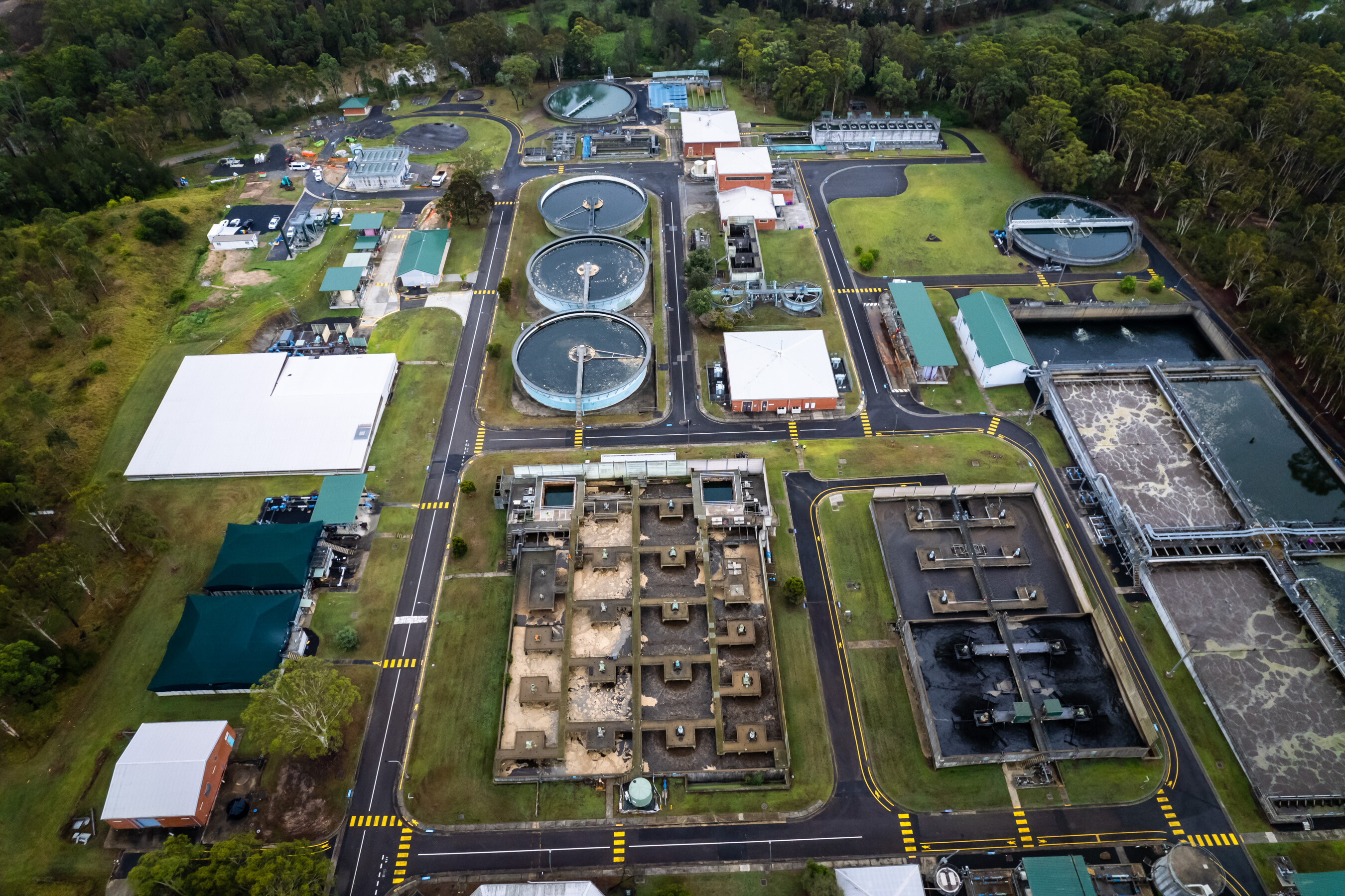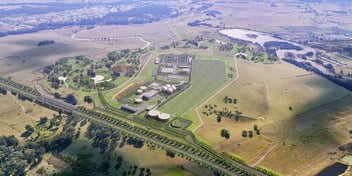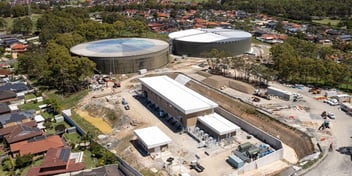Major wastewater treatment expansion launched in Sydney’s north west

With the population in Sydney’s north west growth corridor expected to double by 2036, Sydney Water is set to deliver a series of staged works designed to expand wastewater treatment capacity, protect the environment and lean into innovative new circular economy opportunities.
Representing an investment program of over $1.5 billion, the North West Treatment Hub Growth Program will include upgrades to Castle Hill, Riverstone and Rouse Hill Wastewater Resource Recovery Facilities, with works also set to improve the environmental performance of the plants.
Sydney Water’s Head of Major Projects, Bernard Clancy, said the North West Treatment Hub Growth Program will see a major expansion of treatment capacity. across the wastewater network.
“We have a huge amount of growth anticipated in the north west. By 2036, we expect to have an 112% increase in population, and 127% by 2056,” he said.
“It’s an established growth area and we also now have a lot of additional development occurring with the metro transport corridor opening up.”
Aside from the need to expand treatment capacity, Clancy said there are also crucial environmental targets that need to be met, given the treated water discharged from all the plants finds its way into the Hawkesbury-Nepean River system.
NSW EPA has developed a new framework for managing nutrients in treated wastewater discharged into the Hawkesbury Nepean River, which will be the basis for future environmental regulation across all wastewater plants discharging into the river and its tributaries.
“Our three plants in the northwest discharge into either Cattai, South and Eastern Creeks. All of these waterways are part of the Hawkesbury-Nepean River system,” Clancy said.
“The EPA have determined that the environmental condition of the river is unacceptable, primarily due to elevated nutrient levels and prolonged periods of low flow.
“The wastewater plants through the catchment are not the only contributor to nutrients in the river, but as a point source, nutrient levels can be effectively controlled.
“So, not only do we need to increase treatment capacity to cater for the increase in sewage generated with growth, but we also need to tighten up our discharge quality to meet the new environmental targets that are part of the new regulatory framework. It’s driving a lot of investment.”
Circular economy potential
While the expansion of wastewater treatment capacity and appropriate environmental protection are core aspects of the growth program, Clancy said Sydney Water is also taking the opportunity to explore the diversification of reuse products generated from wastewater.
“We currently use anaerobic digestion across several of our wastewater treatment facilities and recover biogas for the cogeneration of renewable electricity. We have also been reusing a huge proportion of biosolids generated from the treatment of sewage for agriculture fertiliser or compost,” he said.
“But an opportunity has come up for us to diversify our biosolids products. Our plan is to utilise a carbonisation process at our Riverstone facility to produce some biochar. It will be the first time Sydney Water has looked to apply this technology.
“It results in a product that’s got great potential to be very valuable. The biochar industry in Australia is just being established, but we see an opportunity to generate a much higher value use of our biosolids stream by exploring reuse opportunities for biochar.”
Delivery innovation
Another innovative aspect of the growth program is Sydney Water’s adoption of the NEC4 Alliance Contract from the NEC4 suite of contracts in support of what’s set to be a multi-year, multi-project collaboration, Clancy said.
“Sydney Water has been using the NEC4 contract suite for our infrastructure delivery for some time. It’s collaborative and focused on good planning, communication and risk management, and improving relationships between clients and supply chain when delivering projects,” he said.
“For the Northwest Treatment Hub Growth Program, we are using the NEC4 Alliance Contract that we have customised for use in Australia. Originally developed in England, we believe that it’s the first time it has been used in Australia.
“We have taken this route because of the program’s complexity. Rouse Hill, in particular, is really at its limit in terms of capacity, and it is always extremely challenging when you are trying to integrate new works into an operating facility,” he said.
“Working around operating assets, accommodating and avoiding existing services and taking assets offline and online to complete cut-ins and cutovers is a really challenging environment within which to do major capital upgrades.
“When we were looking at the characteristics of the project and the challenges that we were facing, we saw that an alliance was the only real way to acknowledge and manage the risk between all parties.
“It helps us be explicit about how risks get managed and set up a contract that gives us that flexibility and transparency to work collaboratively to solve problems we can’t predict but know will occur.”
Staging investment
Given the sheer size of the program, Clancy said investment and works are being split into a series of large investment steps in order to maintain flexibility if needed.
“We have only released the first investment package of $595 million so far. This package is to establish the alliance, and expand the treatment capacity at Rouse Hill and improve the biosolids processing at both Rouse Hill and Riverstone,” he said.
“After an extensive tendering process throughout 2023, we have now established the North West Hub Alliance (NWHA) with our alliance partners John Holland, KBR and Stantec. Since January this year, the team has been progressing the design, procurement and preparing to mobilise.
“We are now scoping and setting the performance targets for the second investment package that will deliver a substantial expansion of the treatment capacity at Riverstone. A target Outturn Cost process will be undertaken to establish a basis for the delivery of this package before it is included into the Alliance’s scope.”
“This progressive release of scopes and pricing throughout the delivery of the program builds flexibility into the way we bring future work into the program, allowing us to respond to changes in growth forecasts or change to performance requirements, for example.”
Clancy said there is always uncertainty with population growth. It may come faster or slower than anticipated. Staging works allows for prudent investment as the program progresses.
“We have set it all up to be expandable to meet our needs in future, rather than locking in investment up front. We are progressively releasing investment into the program to ensure we are not spending money up front if we don't need to,” he said.
“This is about being prudent, and spending exactly what is needed at the right time, which is really important. Sometimes land is rezoned when we weren’t expecting it to be, which brings an influx of houses.
We keep an eye on growth and are looking into the future, as always, but this approach gives us the ability to shift or pivot as needed so that we can deliver all the work in the most efficient and effective way possible.”







